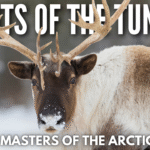Pronghorns: The Fastest Land Mammals in North America
Meet the Pronhorn
Move over, cheetahs—when it comes to sustained speed, the pronghorn is the real MVP of the grasslands. Native to North America, these swift, graceful creatures are often mistaken for antelope, but they’re truly in a league of their own. Whether they’re sprinting across open prairie or grazing with their herd, pronghorns are a marvel of speed, adaptation, and survival.
Let’s explore what makes the pronghorn so special!
Species of Pronghorns
Here are a few examples of pronghorn species and related animals:

Pronghorn (Antilocapra americana)
Found throughout western and central North America, pronghorns are the only surviving members of their family. They are known for their incredible speed and unique forked horns, which they shed and regrow each year.

Saiga Antelope (Saiga tatarica)
Native to Central Asia, these unusual-looking ruminants aren’t true antelope either but share similarities in grazing behavior and speed. Their large, droopy noses help filter dust during migrations.

Tibetan Antelope / Chiru (Pantholops hodgsonii)
This high-altitude grazer from the Tibetan Plateau is closely related to the saiga and pronghorn. Chirus are endangered due to poaching for their soft underfur.
Habitat
Pronghorns thrive in the vast grasslands, sagebrush deserts, and open plains of North America. You’ll find them across the western United States, parts of Canada, and into northern Mexico. These wide-open spaces are perfect for sprinting away from predators and for spotting danger from afar.
Diet
As herbivores and ruminants, pronghorns graze on grasses, forbs, sagebrush, and other low-growing vegetation. They have a multi-chambered stomach that helps them digest tough, fibrous plants efficiently, and they can go long periods without water thanks to moisture-rich foods.
Share On Social:
Mating & Raising Young
Mating season (also known as the rut) typically takes place in late summer to early fall. Males compete for access to females by establishing and defending territories. After a gestation of around 7–8 months, females usually give birth to one or two fawns in the spring. Newborns can stand within 30 minutes and outrun a human in just a few days!






Fun Facts
- Pronghorns can sustain speeds of 35–40 mph for miles and reach bursts over 55 mph — second only to the cheetah in top speed, but unmatched in endurance.
- Their large eyes offer a field of vision over 300 degrees—almost panoramic!
- They’re not true antelope despite the nickname “pronghorn antelope.”
- Unlike most horned animals, they shed the outer layer of their horns each year.
- They can detect movement up to 4 miles away, making them extremely alert and hard to sneak up on.
About Pronghorns
Scientific Family: Antilocapridae
Number of Species: 1 (the only living member of its family)
Habitat: Grasslands, sagebrush, and open plains of North America
Diet: Herbivore – grasses, forbs, sagebrush, and other low-growing plants
Lifespan: 10–15 years in the wild
Unique Traits: Shed horn sheaths annually, panoramic vision, second-fastest land animal
Social Structure: Seasonal herds – bachelor groups, female herds, and mixed bands
Fun Fact: Pronghorns often crawl under fences instead of jumping over them, which can create conservation challenges
Why We Love Them
Pronghorns are beautiful reminders of North America’s wild and open spaces. With their massive eyes, graceful speed, and curious blend of traits, they’re one of the most unique hoofed mammals in the world. Whether you’re a wildlife lover, a speed enthusiast, or just fascinated by nature’s surprises, pronghorns have something to offer.











Conclusion
Pronghorns might be built for speed, but there’s so much more to these grassland grazers than just their racing stripes. From panoramic vision to their unique horn-shedding superpower, pronghorns are a one-of-a-kind creation that showcases the brilliance of adaptation—and the creativity of our Creator!
If this post made you fall a little more in love with wildlife, be sure to watch the full video and share the wonder with someone who’d appreciate it. 🐾
🪿 Save this post, share it with a friend, or drop us a comment—
every little share helps celebrate and protect the amazing animals we share this world with.
Watch the Video on YouTube:
Meet the Pronghorn: North America’s Fastest Land Animal
Learn more about:
Mammals, Ruminants, Grasslands Animals and North American Wildlife






Leave a Reply